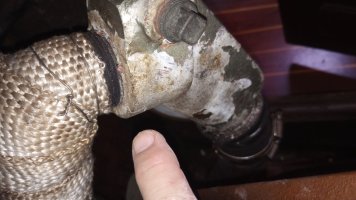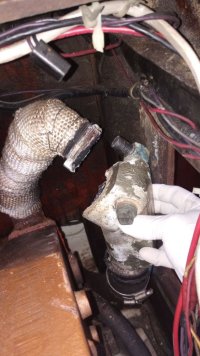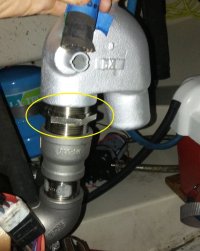Everything is a trade-off.Is there anything critical about the riser length (flange to elbow)?
- If the riser is high enough that the water-injection point is above the water-line, an anti-siphon loop isn't really required. (except that under heeling, this height-above-waterline is reduced).
- The distance between injection point and the entry to the water-lift muffler should be at least 12 inches or so, to allow enough length to cool the exhaust gasses before they enter the (usually) plastic or fiberglass muffler. A taller riser might help with this.
- The taller the riser, the more stress it places on the exhaust flange. Engine vibrations will make the riser vibrate too, and all these forces pass through the exhaust flange.
When I rebuilt my riser (link posted in post #19) I made it about an inch taller that the Universal riser it replaced. I think it's still 4-5 inches below the bottom of the cockpit floor.









